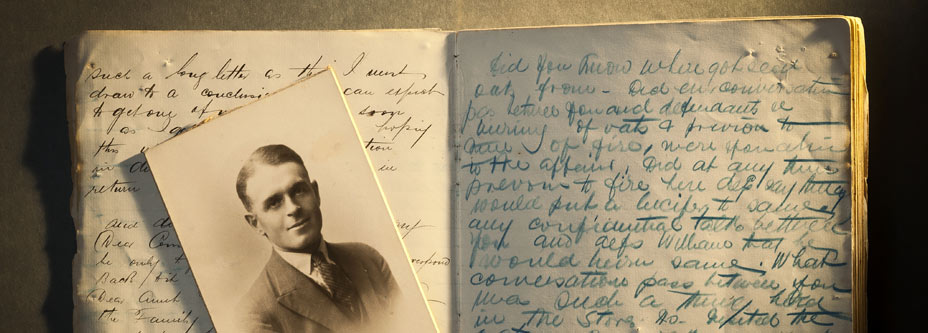
Hocken legacy
Trading places
A copra trader's account of his time in the Solomon Islands provides a fascinating glimpse into the everyday lives of traders and islanders, says University of Otago History Professor Judith Bennett.
William Crossan's diary, written mostly in pencil, records the six months he worked as a copra trader in Hada Bay on the island of Makira from 1885-6.
“Very few traders of this era in the Pacific have left documentation,” says Bennett. “They tended to be transient – and not particularly given to writing diaries or letters. They flick in and out of history and we only hear of them from missionaries and warships.
“This diary is important for someone wanting to know what traders did, or about that island or the life of colonial labour recruiters.”
The diary was donated to the Hocken in February 1987 by the then Dean of Dunedin's St Paul's Cathedral after being found in an old desk at the Deanery. The link between Crossan and St Paul's is unknown, however Crossan was an Anglican. The diary shows his thoughts on many topics, including island life and conflict, cannibalism and his social interactions with the coastal people, primarily with Chief Sono, whom he called Johnstone.
“For me, the most important thing was the relationship between Johnstone and Crossan,” says Bennett. “It was reciprocal – not one dominated by the other.”
Johnstone needed Crossan to give him access to goods. In return, Crossan needed Johnstone's support to collect copra and to protect him from the many dangers on the island.
“There was a kaleidoscope of changing patterns of power. The coastal people and “bush people” had tension between them. And there was tension between the different coastal groups.
“Other traders had been killed in that area. They'd either cheated, looked at someone the wrong way or, before that, another white man had offended.”
Crossan stayed out of the politics and had no major issues, but did anger Johnstone once by making a comment about his “sister”. The chief did not talk to him for some time.
“I cannot think of what I said to the old fellow that he should take such offence as this.”
The diary shows Crossan to be an intelligent, hard-working man who had his mind on the job, says Bennett. “He was very single minded. You don't get money if you don't get copra.”
A decline in the copra market, combined with the wounding of an islander by his partner, may explain his sudden return to New Zealand. “We think he thought it might be time to go home. We can only infer.”
Bennett and geographer Tim Bayliss-Smith, from St John's College, University of Cambridge, England, have transcribed and annotated Crossan's diary in their book, An Otago Storeman in Solomon Islands: The Diary of William Crossan, Copra Trader 1885-86, which adds historical commentary as well as information about Crossan's life before and after his time in Makira. It is available online was recently launched at the Hocken.
LAURA HEWSON
HOCKEN EXHIBITION
Place Makers: Artists and Iconic Landscapes
Hocken Gallery
Until 7 February 2014
Drawing on the Hocken's Pictorial Collections, this exhibition focuses on predominately 20th century depictions of place by New Zealand artists.
